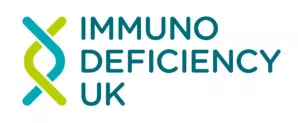Summary
Neutrophil disorders are a group of conditions that affect the body’s ability to fight bacterial and fungal infections. Neutrophils are a type of white blood cell that clear bacteria and fungi from the body. They are also called granulocytes or pus cells.
Neutrophils are produced in bone marrow and released into the blood. They control infection by travelling into body tissues to kill microorganisms, such as bacteria and fungi. Neutrophils destroy bacteria and fungi through a process called phagocytosis. This process involves the neutrophils engulfing infected cells and using granules (small particles) and chemicals to destroy the bacteria and fungi. Neutrophils also produce chemical signals that attract other neutrophils at sites of infection, and an accumulation of neutrophils forms pus.
There are many different conditions that are grouped under the heading neutrophil disorders. However, people affected by a neutrophil disorder have:
- a reduced number of neutrophils, owing to a defect in the production of neutrophils, or
- neutrophils that don’t function properly, or
- low numbers of neutrophils, associated with another disorder.
If you have a neutrophil disorder it means that you can’t fight infections as well as people with normal levels of functioning neutrophils. Some neutrophil disorders affect both males and females, and the severity of the condition can vary. From an early age, patients may have severe, recurrent bacterial and fungal infections, such as pneumonia, meningitis, sepsis and abscesses.
The aim of treatment is to reduce the risk of infection by practising good hygiene, including dental hygiene and skin care, and to treat promptly any infections with antibiotics and antifungal agents.
More specialised treatments depend on the condition and may include stimulation of the bone marrow to produce more neutrophils (using G-CSF ((granulocyte colony-stimulating factor) injections) and, if appropriate, a stem cell transplant.
The outlook for patients with neutrophil disorders depends on the severity of the disease, how much damage has occurred before diagnosis and how successfully infections can be prevented and treated in the future.
This information focuses on inherited genetic conditions that affect the production of neutrophils or the way neutrophils work.







